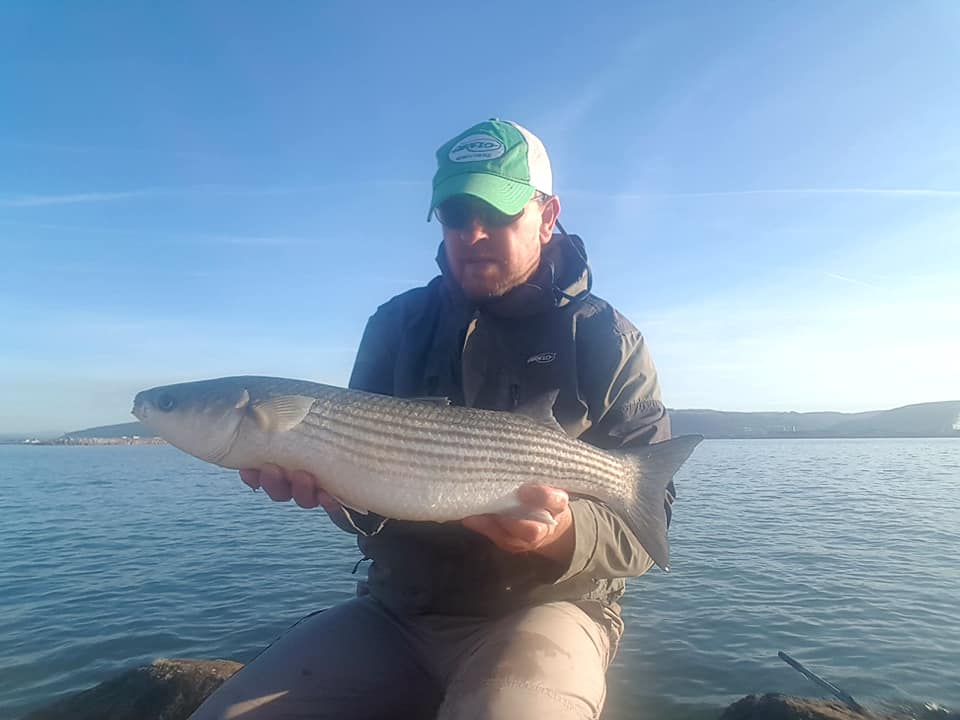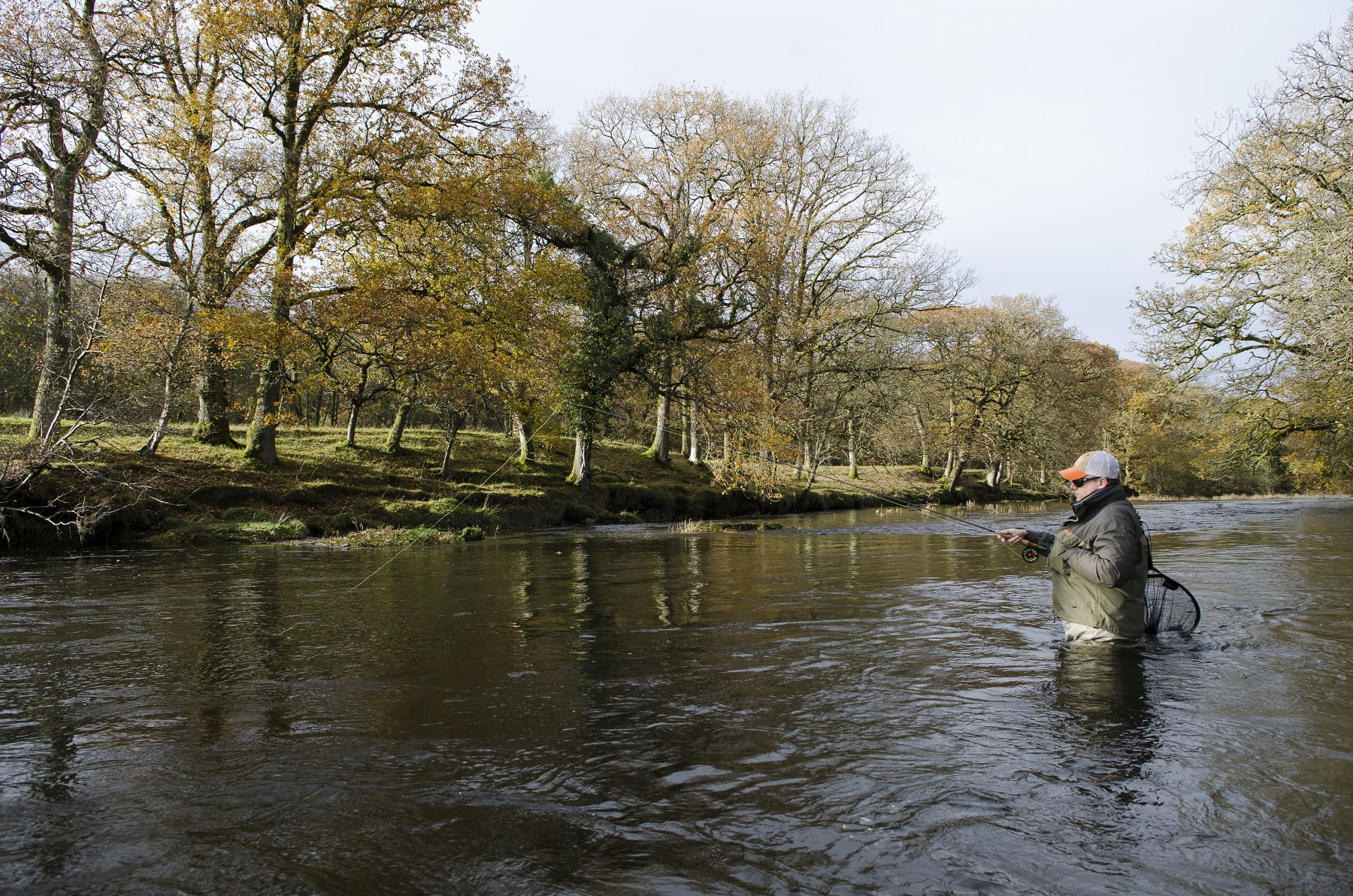Fly Fishing For Mullet
Ever dreamed of catching a bonefish on the fly but simply never had the chance? Then why not try and catch the next best thing – fly fishing for mullet in Wales.
Hook up with one and you are guaranteed a serious bend in your fly rod! Mullet can be found in great quantities all over the Welsh coast and they are not quite as difficult to catch as they are reputed to be.
South Wales based saltwater ace Darren ‘Daz’ Jackson has been landing Mullet on the fly regularly over the past few years – read on to find out how he does it.
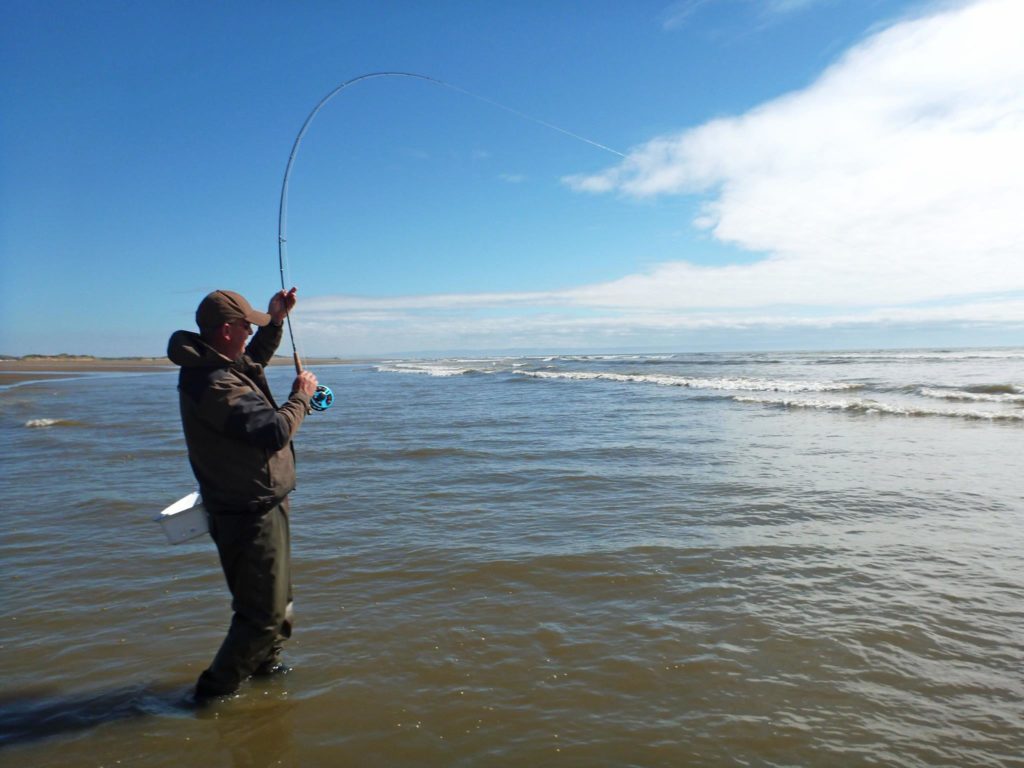
A great deal of my angling is concentrated in and around the fish species rich Bristol channel along the South Wales coastline. With this being the case, I like to pay a lot of attention to my favourite finned friend…. the Mullet, which is a very common fish all over Wales. In fact, it could be said Wales has some of the best mullet fishing in the UK, if not Europe!

Mullet offer tremendous sport to the fly fisher and pound for pound they are as strong has any fish that swim our shores. As most of us now know, the once thought uncatchable fish with mouths softer than a gone off banana is total rubbish! They take a fly with gusto (not all the time, I may add) and with lips tougher than one of my wife’s steaks they are certainly worth targeting. All three species found in Wales (the thick lip, thin lip, and golden grey) can be caught with a bit of stealth and a well-presented fly.
All three can also be the most frustrating fish in the world to catch and will have you pulling your hair out at times. I can’t stress enough how important it is to find “feeding fish” if you want to give yourself any chance of hooking up with one, and to be fair, this can be most difficult if your just starting out!
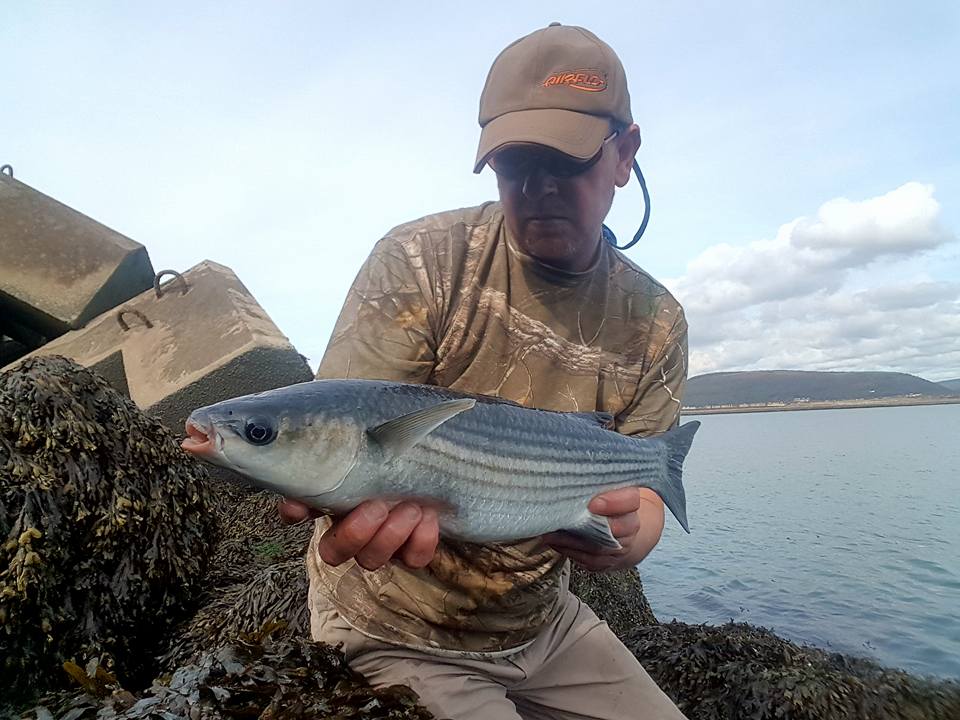
There may be literally hundreds of fish in front of you and you could throw the lot at them, if they are not on the feed, you will “not” catch them. They are miles apart from other predatory fish who can be tempted in to having a snap at our offerings even when stuffed to the brim with food. Experience and time spent on the water studying these fish tells me when to walk on past or to throw a fly at them! Fish cruising around looking uninterested usually are. Look for tell-tale signs that they are switched on – tailing fish or surface feeding fish are the obvious signs, you have to spend a little time watching fish holding mid water, look for a flaring of the gills, any sudden movements to the left or right almost like a trout intercepting a passing nymph. Anything looking out of the norm is well worth a cast.
Location: Thick and thin lipped mullet can be found in a variety of locations in wales, from sandy open coast beaches to many miles up a river system in fresh water, one of the few fish that can tolerate this. For the most part, golden grey mullet are generally found on open clean sandy beaches .
Tackle: A 5 or 6 weight fly fishing rod is ideal and more than capable of taming the biggest of mullet. I personally use an Airflo fly rod in 9ft 6 weight for 99% of my mullet fishing. Teamed up with the superb Airflo SuperFlo fly line it really is a sweet little outfit. A selection of fluorocarbon leader material between 5 and 8lb will cover most if not all situations. A tapered leader or polyleader is also of great benefit to aid turn over and presentation but not essential.
I’m also an opportunist and if I’m out after bass and a shoal of feeding mullet turn up I will quite happily throw the 8 weight at them, even on this fairly heavy outfit they put up an awesome scrap! So I always carry my mullet flies on me, just in case.
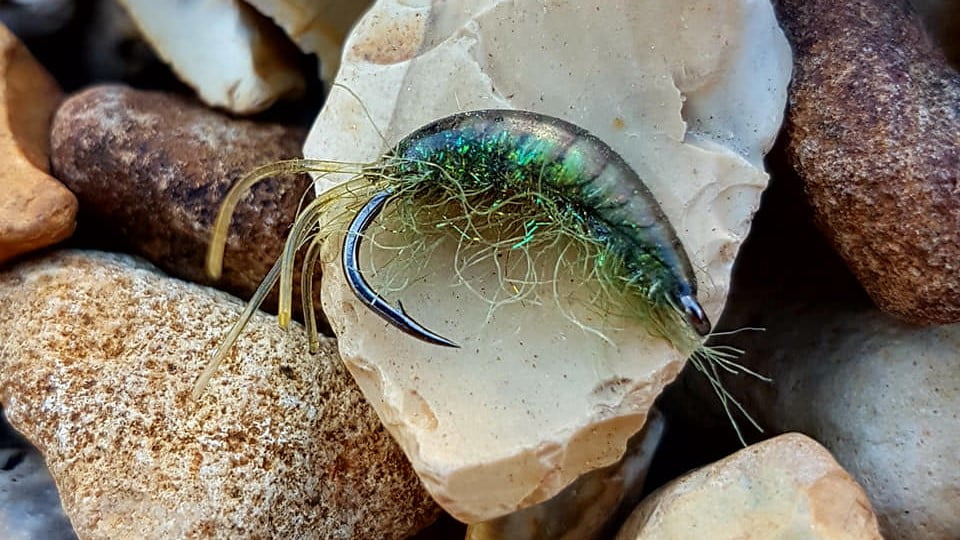
Flies: 3 of the most consistent flies I use are the spectra shrimp, Ray’s mullet fly, and the flexi worm. I wouldn’t go anywhere without a few of each in my box. There are a number of others that will take fish, hares ear nymph, pheasant tail, red tag, I could go on but, put simply, small shrimp patterns tied on hooks of between #16 and size #12 will get you results.
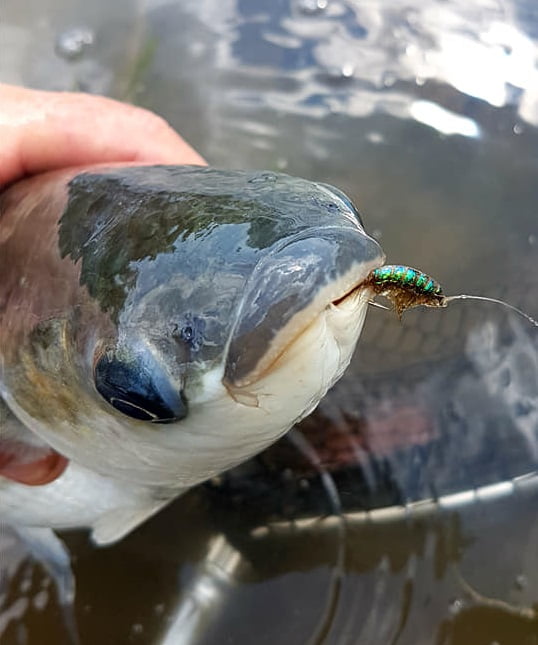
Tactics for estuary and river fish: You are certainly going to have some flow and this is to our advantage. Once the fish have been located (hopefully feeding fish) creep quietly in to position to make the cast, cast well ahead of the shoal just allowing the flies to dead drift over them. If the fish are lying a little deeper in the water then throw the flies up a little higher or, as far has you think is enough so when your flies reach the fish they are fishing at the desired depth and right in the zone.
The mullet will move quite a way to intercept our offerings at times but by putting them right in their face helps. The dead drift takes a great deal of my fish and is by far my most successful method, they also respond well at times to a moved fly, a steady figure eight, short strips, try the lot to induce a take. If they are lying in quite a depth of water or hard on the bottom the same methods can be employed, we just need to had some weight to our flies with bead heads and lead wire under bodies.
When the fish are feeding right off the top then a ‘washing line’ setup can work a treat- i.e a buoyant fly on the point, with another pattern on the dropper. Takes can be very gentle so concentrate and pay close attention to the end of your fly line for any indication that a fish has taken your fly, set the hook with a controlled strip strike. Take a little care when using this method, an over aggressive strip and light leaders don’t go well with each other (as I have learnt!) and you will soon find yourself and the fish have parted company rather quickly.
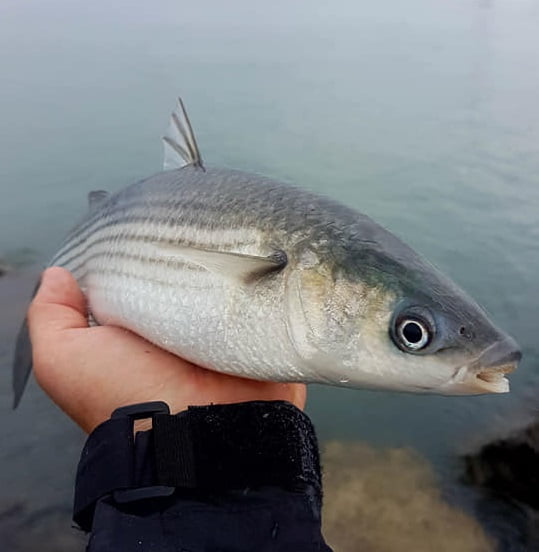
Tactics for shore and beach fish: This what I enjoy most and the closet thing you will get to in this country of walking a Cuban flat for bones, it’s very much alike. The best plan of attack here is to wade out into the surf 20 to 30 yards out if possible, in order to put yourself between the fish and the shoreline. Walk slowly parallel to the water’s edge scanning well ahead for signs of fish, they are usually quite easy to spot because of the fact they are feeding in inches of water, water so shallow their backs are out. As the surge of the water from a breaking wave rolls up the beach the fish follow looking for any morsels which may have been dislodged, as the water starts to flow back this is when they are most visible, they almost strand themselves in the thin water, with tails working overtime. They always seem to make it back though, I’ve yet to see one not make it.
So, once the fish have been located slow down, take your time, wade out a little more if possible and come back in quietly behind the fish. Big casts are very rarely needed and a 20 yard throw is a long one. Make the cast, sometimes you will be dropping your flies on to the sand and as the water covers them the fish will be following and with a bit of luck pick them up. They could also pick them up when the water is receding and your flies are tumbling back down the beach toward you, you’ll need to try and keep in contact with your flies with a steady figure of eight or strip to set the hook , to much slack could result in a missed chance.
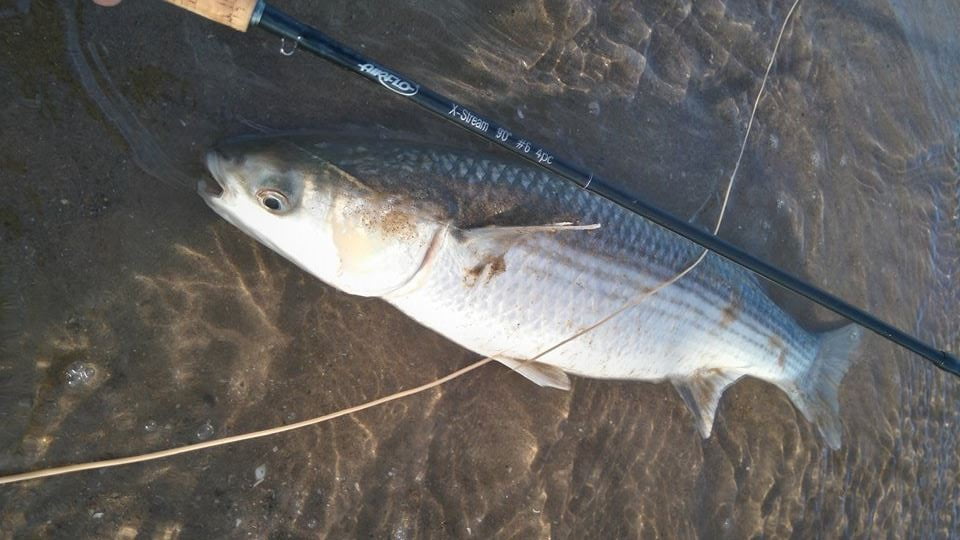
If the fish are feeding and holding in slightly deeper water just off the shoreline, drop your flies in the middle of them and try to keep them there as long has you possibly can before tide movement and wave action takes them out of the game. Some beaches can be quite funny to read at times, one minute it will be running right to left and then 30 yards up the beach left to right. Faced with this situation and once you work out which is which (a few casts will tell you quick enough) make a cast up tide and swing the flies through the fish- I’ve found this to be a very productive method. You can of course fish off the beach and sometimes it’s the only way because of conditions, if you have to resort to this even more stealth is needed.
Mullet are incredibly spooky when walking the shoreline and seem to be able to see you from a long way off. Walk very slowly, pause for a minute or two scanning as far ahead has you possibly can for signs of fish. Once located don’t try and walk straight up on the fish, more often than not you will just send the scurrying for deep water, keep low, even getting down on your hands and knees for the last crucial yards. Make your casts from the kneeling position.
I can guarantee you won’t be disappointed if you connect with a Welsh mullet on your fly rod – so why not give it a go! But also prepare yourself for a little disappointment and make sure you leave the swear box in the house.
Tightlines, Daz
Words: Darren Jackson
Images: Darren Jackson
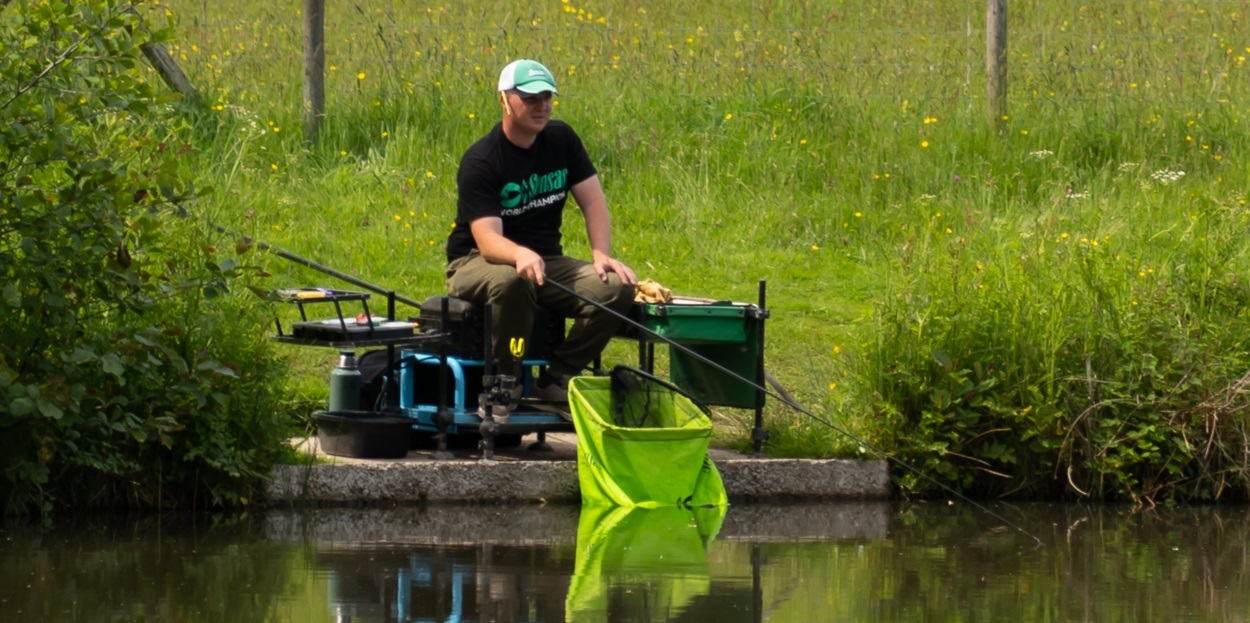
Cast a line and get back to your happy place
As we near National Fishing Month in August, Natural Resources Wales (NRW) invites everyone to experience the joy and…
Read More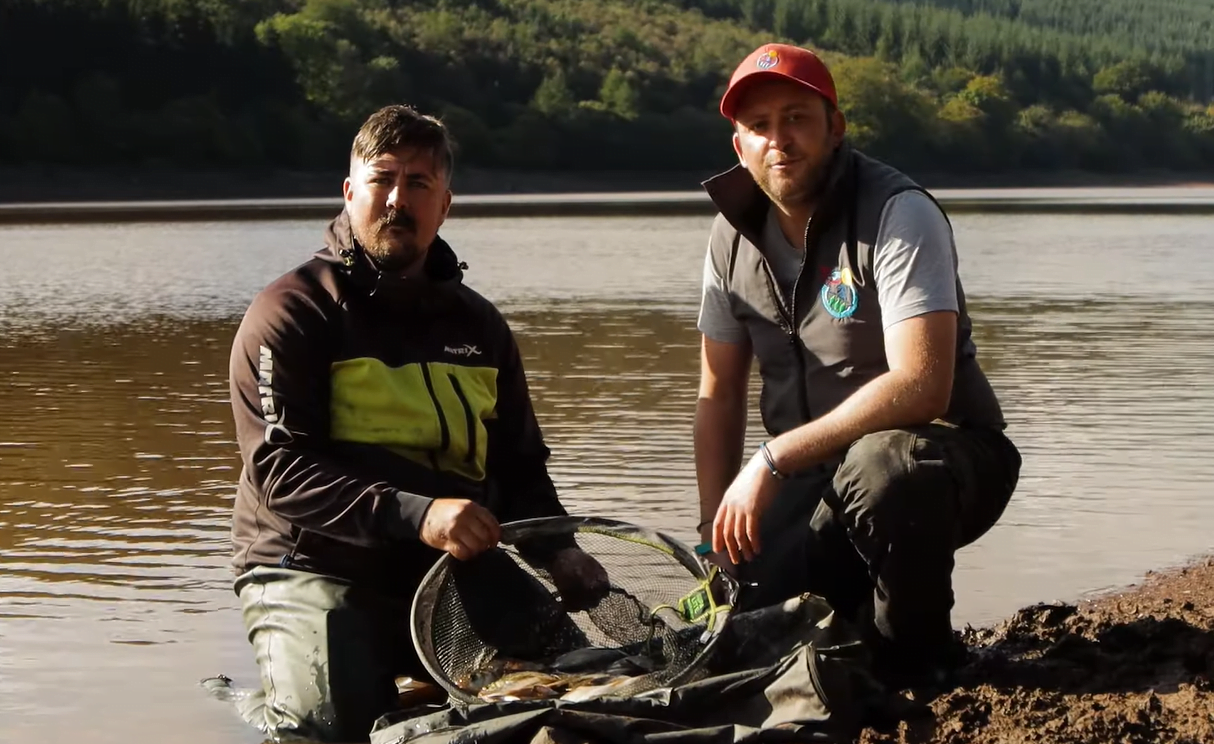
Take A Friend Fishing is Back
‘Take a Friend Fishing’ is on from 27th July to 1st September 2024 for National Fishing Month! Get together with…
Read More
10 Lake Challenge VIDEO - Aberystwyth Angling Association
In this ‘summer special’ video Alan ‘Parf’ Parfitt, Ceri Thomas and Mark Evans take on the ’10 Lake Challenge’ which…
Read More
